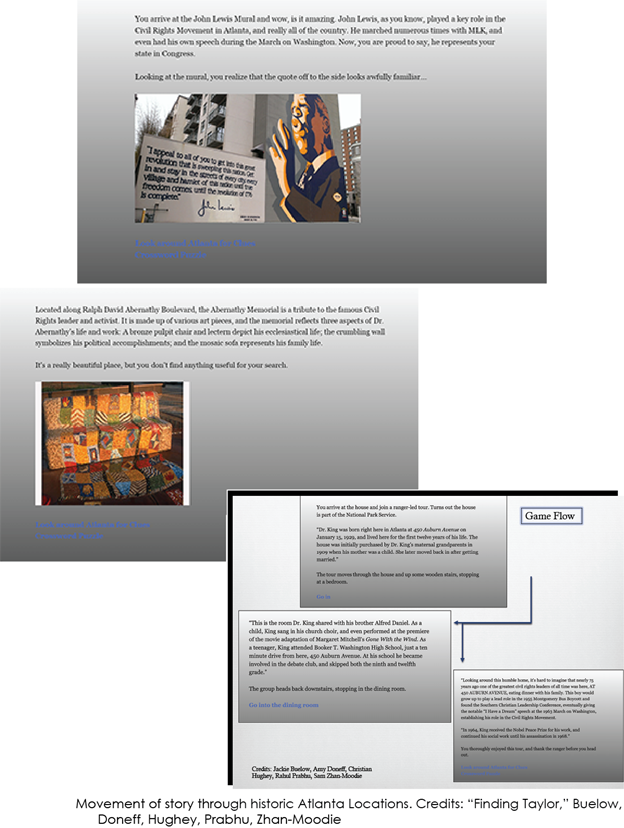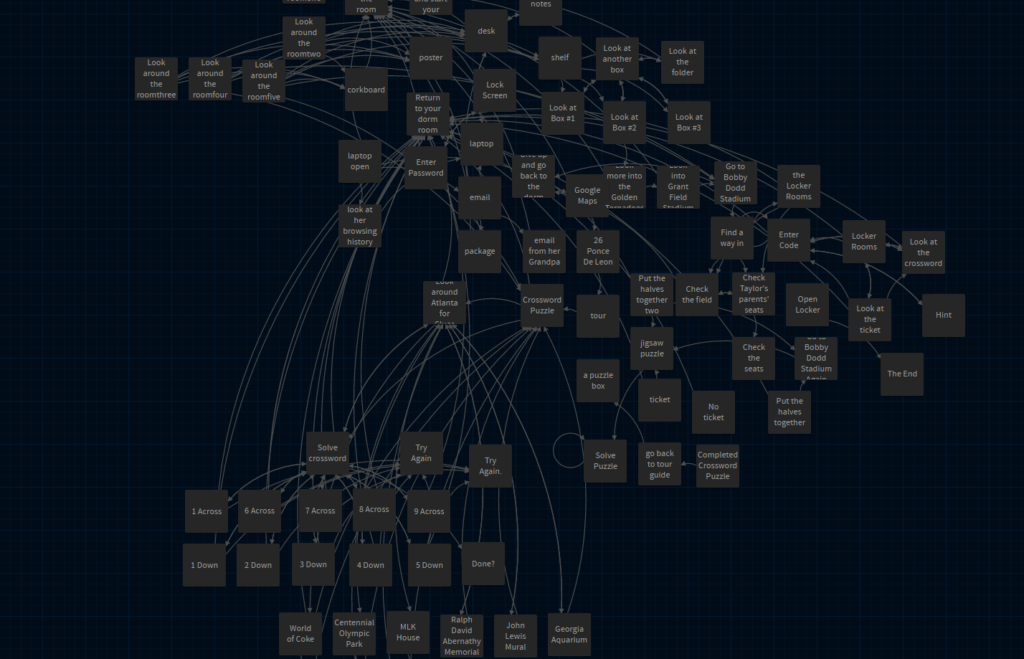Summary
This teaching project was developed for using library archives with digital hypertext. Working as a member of a Digital Integrative Liberal Arts Center group in the School of Literature, Media, and Communication at Georgia Tech, I developed curriculum for the implementation of the Ivan Allen, Jr Mayoral Records (1962-1970) in the humanities classroom.
The purposes of this project included creating accessible archival information for use in research projects in humanities disciplines and authoring narratives that aligned with historic aesthetics and events. Below are examples from Student presentations of their hypertext projects. The attached document shows further examples and reports on the DILAC project:
Hussey-IvanAllen Project Curriculum Report (pdf).

Archival Documents — Atlanta as Setting.

Twine Movement.

Twine map.
Project Reflection
Utilizing the Ivan Allen, Jr Professional Papers grounded student projects in the history of the city: the papers provided meaningful context for the navigation of Atlanta’s locations and the city’s rich cultural past. Considering the design of the assignment, one major priority was to encourage the creative abilities of engineering minds and “builder/maker” personalities; the best way to do so was to facilitate the assignment with strict parameters in order to alleviate the anxieties of a completely open project. We found that engineering students were largely able to connect with the material; they valued the documents as world-building resources with ethical purchase. While the documents were often appropriated in fictional senses, they augmented narrative design by providing a rich archival aesthetic (the “look” of old papers). The projects were shaped by these aesthetics, through the material’s formal beauty and its important political content. Instruction with primary sources was valuable in teaching research skills. Project outcomes included: interdisciplinary coordination and collaboration (History, English, Engineering); archival research (material and digital); game design (narrative, visual, hypertext, materiality). “Constraint yields creativity” became our critical value when considering assignments with parameters. We believe that given the appropriate practical circumstances, teaching engineering students that the gap between art, aesthetics, and other creative work and technical, critical work in the hard sciences can be navigated through generative collaboration. Digital tools appropriated in the humanities provide efficacious methods in revealing design practices.



